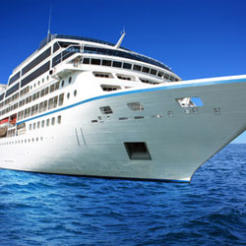William Ryan distinguishes boards' steering and rowing work, offering a fresh lens to maximise board effectiveness, says Tesse Akpeki.
What is it like looking in the mirror and being introduced to yourself for the first time? Ten years later, you take another glance and look at what you have become. Board evaluation practices are now common practice. Boards take time out to reflect on past and current performance while anticipating and planning for the future.
The typical board evaluation process among other things will look at the purpose, direction and values of the organisation, the mix of skills, experience, independence and knowledge of the board in the context of challenges facing the board, succession and development plans and how the board works as a unit.
Now, William Ryan, co-author of Governance as Leadership, makes an engaging and valuable contribution in considering the effectiveness of governance. Ryan integrates some of the strategies and concepts described in Governance as Leadership and suggests an additional dimension for consideration – the balancing of board work and governing work. In his latest work he uses a metaphor in which an organisation is a boat.
The board makes two distinct types of contributions: steering and rowing. When steering, collectively the board sets the direction of the organisation, determines the values and logic that guides it and ensures resources are used appropriately to progress its work.
When rowing, board members individually or collectively expand the organisation’s resources. The rowing activities may involve offering expertise to management, championing the mission of the organisation, or volunteering on the front-line. The rowing or steering work boards undertake vary.
Ryan posits that while rowing work (ie board contribution) is substitutable, steering work (ie governing contributions that enrich board work) is not.
Individual board members may be effective rowers and mistake this productivity as effectiveness as steerers. An effective board must make intentional choices in relation to performance, strategies, and values. Governing well is a collective act involving constructive challenge, debating assumptions, overseeing management and offering objectivity and independent thought.
In the words of a chair I spoke to, “Sometimes we get so busy rowing the boat, we don’t take the time to stop and see where we are going…or what we are becoming, yet we know this is essential for us to lead well”.
On reflection, a board I recently advised found that they were a high-performing board – the governance contribution was high, as were the board contributions. However, given the nature of its work, management was competent and able and needed less expertise from the board to undertake its day-to-day operations. The chief executive admitted that the organisation would have benefited more from the board’s wise counsel and guidance: “While I appreciate the board’s commitment, I would welcome more macro-governance in exchange for less micromanagement,” she says.
What does your board pay attention to? Where does it concentrate its efforts? What is the balance of governing contributions to board contributions?
How effectively does your board deploy steering and rowing work? What is the optimal spot for your board? What would you deem as a sub-optimal place to be? The confidence to answers these questions will depend on the prevailing circumstances and what would be deemed relevant and appropriate. Whatever stance you take, the board’s effectiveness depends on exercising and maintaining a steering role – an important role to play in navigating very choppy waters.
More info: William Ryan is a research fellow at Hauser Center for Nonprofit Organisations at Harvard University
How is your board navigating troubled waters?
29 Aug 2012
Voices
William Ryan distinguishes boards' steering and rowing work, offering a fresh lens to maximise board effectiveness, says Tesse Akpeki.









